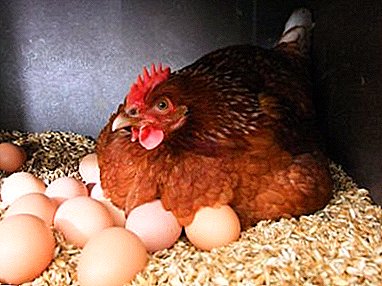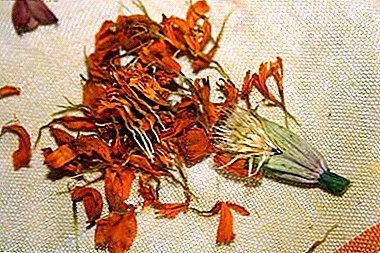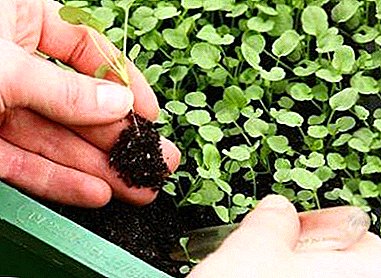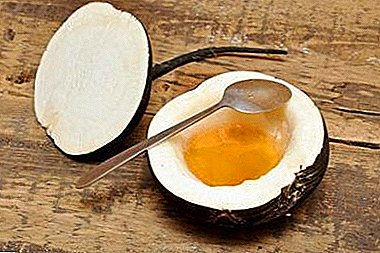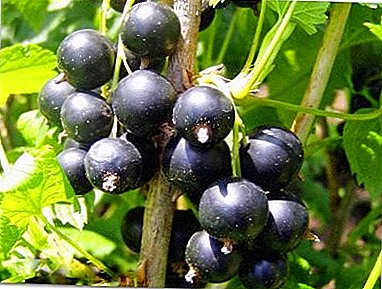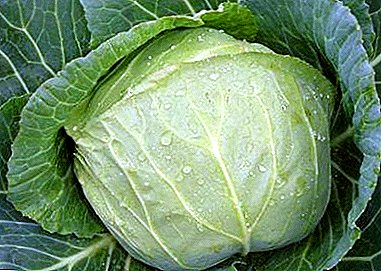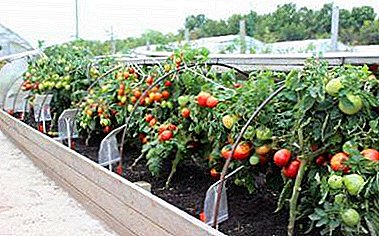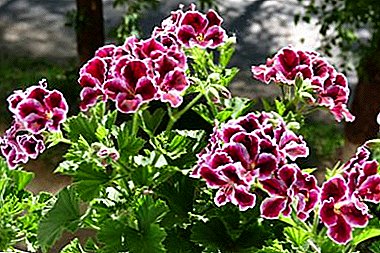
Pelargonium is considered solely indoor plant and is often grown only indoors.
But this is far from the case. The flower feels great in the garden and on a bed in the open air, delighting at the same time with its brightness and lush flowering.
Experienced flower growers recommend taking the flower out in the summer. And with the onset of heat, some even transplant the rooted plant into the ground and with the onset of winter return it back to the pot.
Is it possible to grow a flower outside?
Pelargonium grows very well in the fresh air in the garden, if all conditions are met.
In order for the flower to please the eye with lush flowering in the street, the following is necessary:
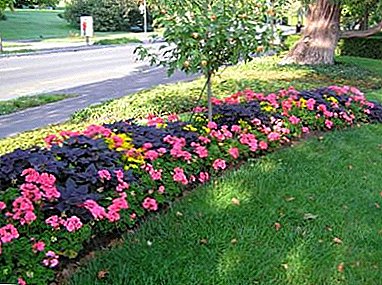 Well lit landing site.
Well lit landing site.- Light, not marshy soil.
- Regular watering as the soil dries.
- Planting should be done when the threat of night frost has passed.
Pelargonium loves the sun's raystherefore, when growing outside, it quickly grows green mass, produces new buds that bloom much brighter than in the conditions of the room. New cuttings also take root and adapt better in open ground.
Outdoor planting rules
There are two ways to grow a flower outside the house: seedlings and planting plants in the open ground. In order to grow pelargonium from seed, it is necessary in February to take care of seedlings.
- Seeds are planted in peat pots or tablets.
- After the first pair of leaves appears, you can swoop down.
- Watering is done as the soil dries.
- At the end of May it is possible to plant seedlings in the ground.For planting seedlings, it is necessary to choose the sunniest plot, otherwise the seedlings will grow poorly or even die.
- Next, young plants require regular watering and loosening the soil. No special actions are required for growing pelargonium.
If there is a desire to transplant a houseplant in the open ground, then it is necessary to prepare the plant for transplanting from early spring.
 In late February, you need to prune the strongly overgrown branches.
In late February, you need to prune the strongly overgrown branches.- The plant is placed on the lighted place.
- Increase watering. It is better to carry it through the pallet.
- Before you transplant an adult plant, it must be well strengthened. For this, it is recommended to produce feeding.
Young cuttings begin to feed only a month.
- After the threat of night frosts has passed, the plant can be transplanted. To do this, the flower together with the earthy lump root in the right place.
Caring for a flower in the street
Pelargonium does not require special care.. The most important thing in growing a flower is timely and abundant watering. In order to ensure air access to the roots, it is necessary to loosen the ground. Watering the plant is better in the morning, especially at first.
Excessive moisture can lead to the development of fungal diseases. Therefore, watering is carried out only as needed.
What to do in the winter?
- With the onset of cold weather, pelargonium must be transferred to a place protected from frost. Many transplant the plant in a pot, and it continues to grow and bloom in room conditions.
- You can cut the branches, and roots transplanted in boxes with the ground.
- Keep plants should be in a cool place, occasionally moistening the soil.
- With the arrival of spring, the flower will emerge from the state of rest, will give new shoots and it can be planted in open ground.
You can not leave the plant to winter on the street, as low temperatures will destroy the root system of the flower.
We offer to watch a video on how to care for pelargonium in winter:
Registration of the site and landing in open ground
Many flower growers planted pelargonium in small containers and placed on the plot. Flowers tolerate both wet and dry weather..
Low bushes look very good on any flowerbed.
We offer to watch a video about the landing of pelargonium in open ground:
A photo
Further on the photo you can see how the flower planted in the open ground looks like, examples of the site design.





Tips and Warnings
Sometimes even with the most undemanding plant trouble occurs. The most common problems with growing are the following:
- The leaves are like a rag, hang, and when touched they fall off. These are the consequences of excess moisture. If it is rainy summer, thinning of plants can help. Otherwise, you can lose all the landing.
- Leaves dry. Little water. Perhaps only the upper layer is spilled and the lower roots do not receive a single drop of moisture. Mulching will help. Water will not slide and evaporate.
- If the leaves appeared gray moldshould stop watering completely.
- On the plant can settle whiteflies or aphids. These pests can be destroyed manually, or treated with insecticides, otherwise they will suck all the juices out of the plant.
- If pelargonium in any way does not bloom, and this often happens with the most beautiful varieties, if not provided all the conditions. In this case, you need to make sure that the plant has enough light, as well as feed. About why pelargonium can not bloom, read here.
If you follow the simple rules of cultivation and care, pelargonium pleases its owners all year round with beautiful flowers.


 Well lit landing site.
Well lit landing site. In late February, you need to prune the strongly overgrown branches.
In late February, you need to prune the strongly overgrown branches.